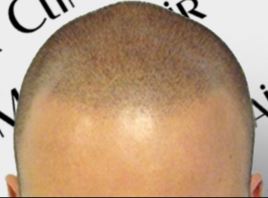Hair loss treatments promise hope but often come with a heavy bag of unwanted side effects. This adds to the emotional and physical burden for those experiencing hair loss. Side effects of hair loss treatments can range from mild irritation to serious health complications. Unfortunately, it could easily turn into another source of frustration. Let’s understand potential consequences of hair loss and its deep psychological impact.
Side Effects of Hair Loss Treatments
Minoxidil is a widely popular topical treatment for androgenetic alopecia. Sadly, it comes with its bag of side effects and can cause scalp irritation, redness, and itching. In some individuals, it may cause hypertrichosis or unwanted facial hair growth. These adverse events make the condition worse for women.
Even worse, Minoxidil requires continuous use. That means when you discontinue, it could trigger hair loss again. If you think of immediate results, you may have to wait for 3-6 months to experience that.
Finasteride, an oral medication for men, blocks DHT hormone, which is linked to hair loss. But one of the side effects of hair loss treatment is that it carries risks like decreased libido, erectile dysfunction, and breast tenderness. In the worst-case scenario, these side effects can persist even after discontinuation.
Hair transplants involve pain, swelling, and a lengthy recovery period. Since it is a surgical procedure, it comes with a heavy baggage of complications. This includes infection, scarring, and unnatural-looking results if grafts fail. Besides, transplants are expensive and could easily add financial strain.
Natural remedies for hair loss are generally safe but lack robust evidence for significant regrowth. However, overuse of essential oils can lead to scalp buildup, potentially worsening hair loss by clogging follicles.
Scalp Micropigmentation: A Better Alternative
Scalp micropigmentation (SMP) addresses these pain points effectively. A non-surgical, low-risk alternative, SMP involves depositing medical-grade pigment into the scalp. The procedure creates results that mimic hair follicles and a fuller hairline. It creates the illusion of density and a buzz-cut look.
Unlike minoxidil or finasteride, there aren’t too many side effects of hair loss treatment with SMP. However, it may cause mild redness or discomfort. Luckily, there’s no risk of systemic effects like those with finasteride.
Being less invasive than hair transplants, SMP requires no recovery time. It delivers instant results after 2-3 sessions. It’s versatile, suitable for various hair loss types, including female pattern hair loss, traction alopecia, and scarring from previous surgeries.
For those with diffuse thinning, SMP reduces scalp visibility, eliminating the need for constant cover-ups. It requires minimal maintenance, with touch-ups every few years, freeing individuals from the daily grind of topical treatments. Most importantly, SMP restores confidence by providing a natural-looking solution, helping people reclaim their appearance without the emotional or financial burden of traditional treatments. While it doesn’t regrow hair, its immediate, long-lasting aesthetic impact makes it a game-changer for those seeking a practical, effective hair loss solution.
SMP Experts Reduce Risk of Side Effects
When considering SMP, selecting an experienced professional is not merely advisable—it’s essential. The scalp presents unique challenges that demand specialized expertise, from understanding how pigments interact with different skin types to replicating the natural appearance of hair follicles with precision.
An inexperienced practitioner like a tattoo artist may create unnatural hairlines, use improper pigment depths resulting in color changes, or fail to account for future hair loss patterns. These mistakes can lead to outcomes that look artificial or require costly corrections.
Seasoned SMP artists create results that complement facial features and appear genuine. They understand how to customize treatments for various skin conditions, scarring, and individual aesthetic goals. The investment in a skilled professional ultimately proves economical by ensuring long-lasting, maintenance-friendly results.
Find Arizona SMP experts at DermiMatch Clinic, who are busy helping clients find the best hair loss solution. Scalp professionals in Arizona can help you overcome the fears associated with side effects of hair loss treatments with their SMP expertise.


